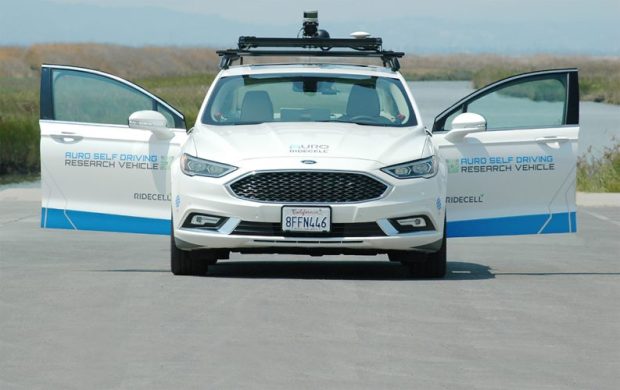Say Goodbye To Ridesharing As We Know It

For decades, it stood as a rite of passage for so many consumers: buying one’s first car. However, according to many experts, vehicle ownership has a limited future, given the rise of ridesharing, autonomous vehicle (AV) technology and the so-called sharing economy.
Companies are competing to win bigger positions within the sweet spot of those three trends. To learn more about this, PYMNTS recently spoke with Aarjav Trivedi, CEO of Ridecell. The company, founded in 2009, empowers new mobility operators, including original equipment manufacturers (OEMs), car rental companies, auto clubs, cities, transit agencies, dealer groups and private fleets to launch, expand and maximize the utilization of their own ridesharing and car-sharing services.
The PYMNTS interview came as Ridecell has expanded its Series B equity investment round to more than $60 million, funding that will go toward continued development of the company’s platform. In addition, fresh testing of autonomous vehicles has recently started, with investments continuing to flow into that sector. All that activity foreshadows significant innovation and change in the years to come for the automotive sector, including ridesharing, car sharing, payments and commerce — vehicles, after all, impact so many areas of the economy and culture.
“Autonomous driving is disruptive, but until autonomous vehicles are shared, autonomous driving is just another form of advanced cruise control,” Trivedi told PYMNTS. “Combined with shared mobility, it will become the pillar of the transformation of society from vehicle ownership to using shared mobility.”
Platform Battle
The platform battle will guide much of how the autonomous vehicle ecosystem evolves. Ridecell is preparing for that future while dealing with the realities of what’s happening now.
“Ridecell [has been] focused on building the on-demand transportation platform that will scale from driven to driverless to help companies achieve a successful shared mobility platform,” Trivedi said. “Our Auro autonomous tech can be used for near-term use cases to support car sharing.”
The company’s platform, according to Trivedi, works to “power” car-sharing and ridesharing services, and “manage profitable new mobility services.” Ridecell’s Auro technology is designed for “today’s near-term use cases for autonomous driving, with Level Four low-speed use cases,” he said. In the world of autonomous driving, Level Four refers to, as one outlet put it, a vehicle that “can operate without human input or oversight, but only under select conditions defined by factors such as road type or geographic area.”
Autonomous Future
So where are all those autonomous vehicles?
For the most part, they are on testing tracks and roads. However, if one believes the U.K.’s transport secretary, autonomous vehicles may appear in mainstream traffic within four years. Many experts have predicted that autonomous trucks — as in semi-trailer trucks that haul freight — will hit the highways in greater numbers initially, perhaps having a quicker impact on payments and commerce, and even AV technology. There seems little doubt, though, that autonomous vehicles are coming, and for real.
“When AVs [become] mainstream, the entire supply chain of eCommerce and [the] food delivery industry will be revolutionized,” Trivedi told PYMNTS. “The unit economics go down, and with delivery becoming extremely fast, a major share of consumption of products by customers would be through AV deliveries.”
Ridesharing, too, will experience major disruption — and that will have wider impacts on the larger automotive ecosystem.
“The biggest change in ridesharing in the coming future is autonomous driving,” Trivedi said. “Once the driver is removed from the vehicle, the cost of the driver is also removed, which will reduce the overall cost of offering a rideshare service.”
He said the cost of ridesharing services could decline to $.25 per mile — or less — from about $1.50 per mile currently. “This would make ridesharing much cheaper than driving your own car,” he added.
Autonomous Transformation
That will lead to even greater transformation.
“In urban areas, where these services may displace car ownership, the market will shift from services that cater to private vehicle owners to services that cater to fleets of vehicles,” Trivedi said. “Autonomous ridesharing services will transform mobility for less-mobile populations, such as disabled veterans, the elderly, low-income and/or isolated populations. This will allow seniors and veterans access to subsidized healthcare and other public services, which they may [not have] been able to physically access before due to lack of owned or affordable transportation.”
There is little doubt that AVs — along with connected cars and trucks — will also influence other industries.
“If the accident rate for autonomous really decreases by 90 percent, private shops that service accident repair may find their business[es] diminish considerably,” he said. “Auto insurance is also expected to be considerably impacted in the wake of the shift to autonomous driving.”
In fact, as PYMNTS recently reported, the auto finance industry is already mapping out possible responses and changes to the rise of connected and autonomous vehicle technology. However, even outside the scope of AVs, Trivedi said, new technologies and shifting consumer behavior — as well as the increased use of mobile — are already working to turn vehicles into “payment devices.”
PYMNTS has regularly reported on how fuel and other purchases are being changed by connected car technology. According to Trivedi, that’s just a taste of what’s to come.
A century ago, the fast-growing automotive industry brought major economic and cultural changes to the United States and other countries. One can count on a similar — or perhaps even greater — level of change in the coming years as autonomous vehicles hit the road and play a real role in payments and commerce.
